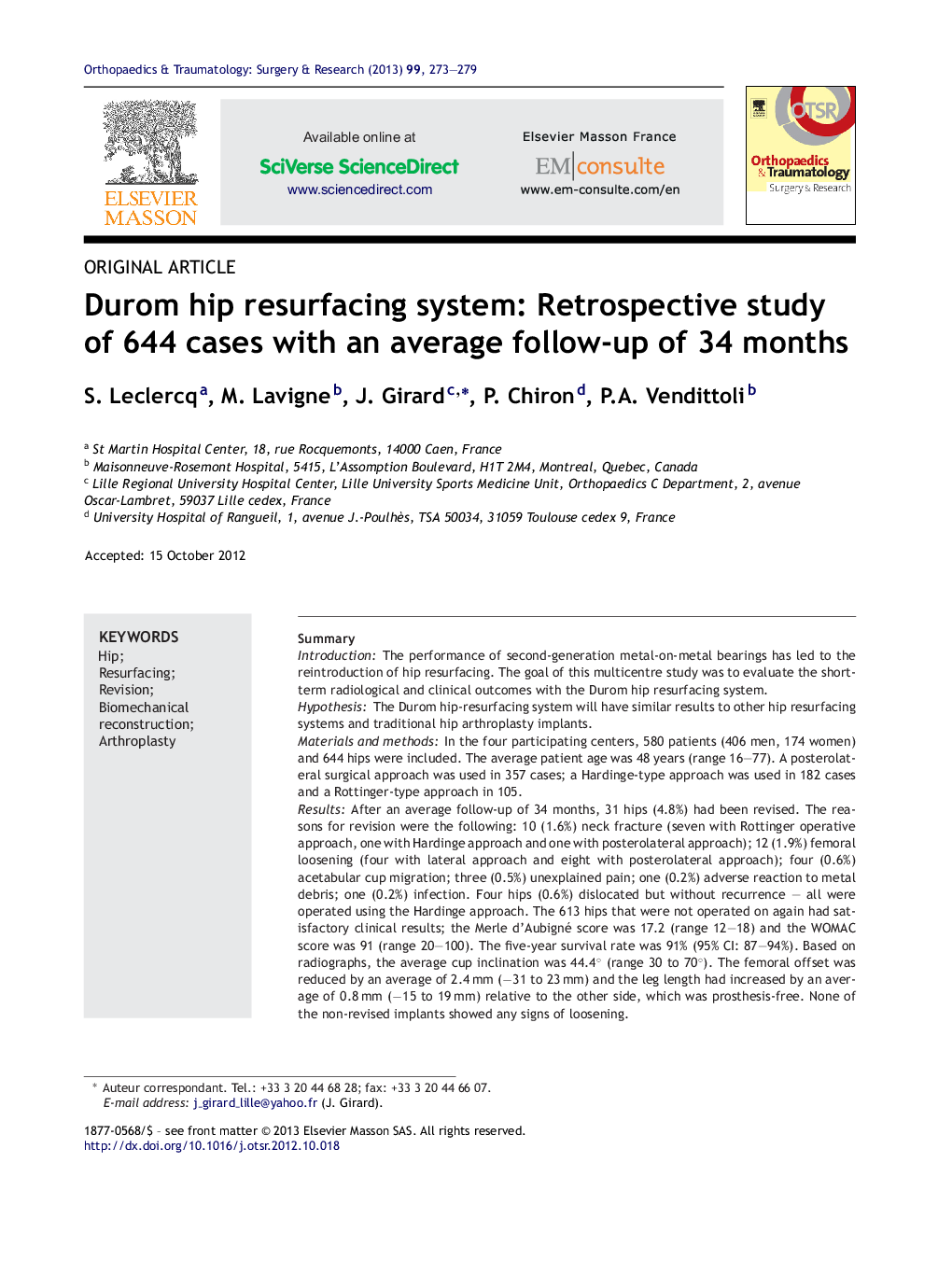| کد مقاله | کد نشریه | سال انتشار | مقاله انگلیسی | نسخه تمام متن |
|---|---|---|---|---|
| 4081843 | 1267611 | 2013 | 7 صفحه PDF | دانلود رایگان |

SummaryIntroductionThe performance of second-generation metal-on-metal bearings has led to the reintroduction of hip resurfacing. The goal of this multicentre study was to evaluate the short-term radiological and clinical outcomes with the Durom hip resurfacing system.HypothesisThe Durom hip-resurfacing system will have similar results to other hip resurfacing systems and traditional hip arthroplasty implants.Materials and methodsIn the four participating centers, 580 patients (406 men, 174 women) and 644 hips were included. The average patient age was 48 years (range 16–77). A posterolateral surgical approach was used in 357 cases; a Hardinge-type approach was used in 182 cases and a Rottinger-type approach in 105.ResultsAfter an average follow-up of 34 months, 31 hips (4.8%) had been revised. The reasons for revision were the following: 10 (1.6%) neck fracture (seven with Rottinger operative approach, one with Hardinge approach and one with posterolateral approach); 12 (1.9%) femoral loosening (four with lateral approach and eight with posterolateral approach); four (0.6%) acetabular cup migration; three (0.5%) unexplained pain; one (0.2%) adverse reaction to metal debris; one (0.2%) infection. Four hips (0.6%) dislocated but without recurrence – all were operated using the Hardinge approach. The 613 hips that were not operated on again had satisfactory clinical results; the Merle d’Aubigné score was 17.2 (range 12–18) and the WOMAC score was 91 (range 20–100). The five-year survival rate was 91% (95% CI: 87–94%). Based on radiographs, the average cup inclination was 44.4° (range 30 to 70°). The femoral offset was reduced by an average of 2.4 mm (−31 to 23 mm) and the leg length had increased by an average of 0.8 mm (−15 to 19 mm) relative to the other side, which was prosthesis-free. None of the non-revised implants showed any signs of loosening.DiscussionThis multicentre evaluation revealed that the Durom revision rate was slightly higher than the rate with other hip resurfacing systems and traditional total hip arthroplasty. Although the Durom system displayed excellent tribological performance, the differences relative to other implants may be attributed to the challenges associated with impaction, related to the geometry and design of the cup, and to precarious primary fixation. The choice of surgical exposure and implantation technique was an important factor in the survival of the implant.Level of proofLevel IV – Retrospective study.
Journal: Orthopaedics & Traumatology: Surgery & Research - Volume 99, Issue 3, May 2013, Pages 273–279